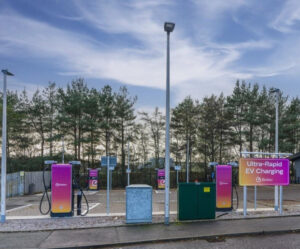The UK highways sector is driven by technology advancements. The evolution of the Internet of Things (IoT) has led to the emergence of connected asset management.
Local authorities increasingly appreciate the importance of harnessing data to shape their strategic approach and the need to make investment decisions based on up-to-date and accurate information.
The new code of practice from the UK Roads Liaison Group, together with the Department for Transport drive to make long-term, risk-based plans, means that councils need high-quality intelligence in order to make better-informed investment decisions about their highways networks. In most cases, authorities will need to review their data management practices and look at ways of accessing greater volumes of reliable, accurate, accessible and timely data.
One way authorities can leverage data to enhance highway infrastructure asset management is through connected asset management. This new model involves linking all IoT-enabled devices and data from across networks, which allows councils to gain an enriched understanding and control of their assets in real-time, enabling better service delivery.
The approach also helps councils move towards a more holistic approach to working with their infrastructure assets. With connected asset management, authorities can ensure the whole of their infrastructure is working together. They can look at the impact structures have on drainage, carriageways have on structures or trees have on footways, for example. That information can help councils decide where they spend money.
They can ask questions like: what performance do we want from our carriageways, street lights or drainage systems, or where does that money need to be directed to deliver that performance effectively? It’s essentially a switch to a multi-asset modelling approach which provides councils with greater insight into where they can most profitably prioritise their investment.
Opportunities for local government
Given this move to connected asset management, what kinds of data can councils use to support the model? It is crucial that they maintain an asset register and manage it at a componentised level within each asset class.
It is equally key to see how each asset class impacts on and interacts with each other. This means evaluating inspections and schedules across assets such as street lighting, drainage and street works and seeing how they impact on each other. It means examining defects and works orders in a similar way; seeing how they interact across asset class and ensuring that documents, photographs and links are stored in way that is accessible and usable.
Councils should also have a full asset history, so they can draw on the richness of the information they have collected. Ultimately, the added insight that this approach brings will allow authorities to better plan their maintenance and reduce reactive spend.
Technology is now coming on stream, which enables councils to pursue a true connected asset management approach and help ensure they are making optimum use of data in line with the latest code of practice, across their infrastructure stock. Such technology can now also deliver multi-asset modelling and cross asset prioritisation.
Councils will better understand where best to invest money across the network and the likely impact on their infrastructure. The ability to interact with their infrastructure through sensors in the road and get live feeds of all the latest information to optimise maintenance programmes for drainage gulleys, or better understand the performance of their carriageways and footways is powerful indeed.
Connected asset management also enables councils to connect with people across stakeholder organisations and feed relevant information through. It’s also about connected outcomes. Councils can define their strategic goals and then focus on meeting them through the technology.
In today’s highways arena, data should be maintained as an asset. If it is reliable, accurate, accessible and complete, it’s a hugely valuable resource. However, that value is further enhanced by a connected asset management approach, enabling data to be seamlessly collected from across the network, integrated with other data sets and brought to bear to influence key highways maintenance and management decisions.
















